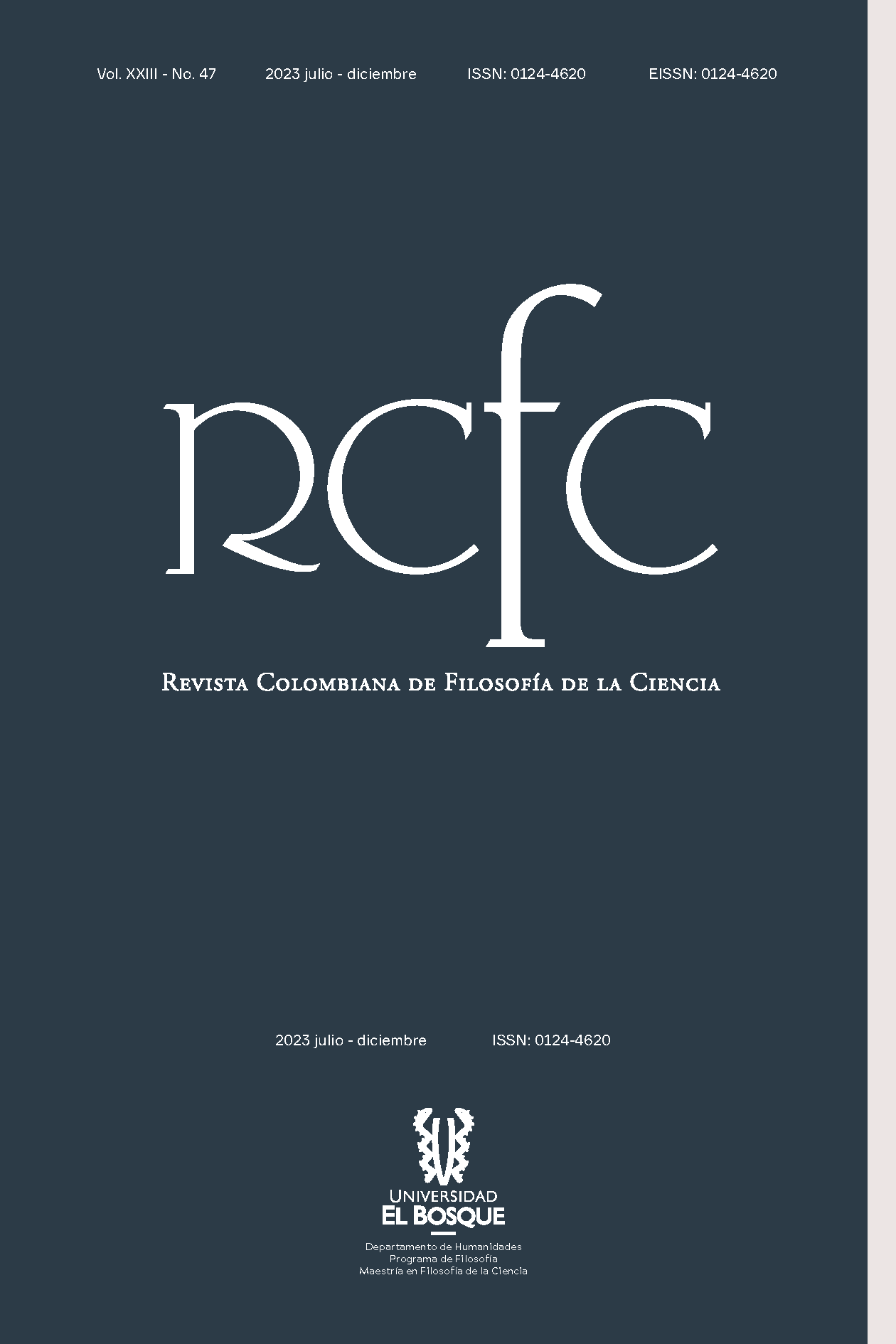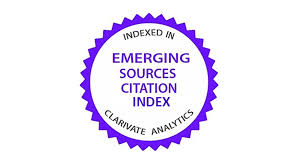Las colonias de hormigas como individuos biológicos
DOI:
https://doi.org/10.18270/rcfc.v23i47.4123Palabras clave:
hormigas, colonia, individualidad, individuo, individuación, funcional, evolutivoResumen
En este trabajo abordo un caso específico del problema clásico de la individuación en la Filosofía de la Biología: el de las colonias de insectos, y en particular, de hormigas. El carácter individual de un conjunto de hormigas que forman una colonia puede ser objeto de controversia, ya que, desde un punto de vista intuitivo, no parece constituir un individuo. Mi objetivo es demostrar que las colonias de hormigas son individuos biológicos. Para ello, me centro en dos de los tipos de individuos más estudiados en la Filosofía de la Biología: los funcionales y los evolutivos, y examino si las colonias de hormigas cumplen con las condiciones necesarias para ser consideradas individuos en estos términos.
Descargas
Referencias bibliográficas
Bernard, Claude. Lectures on the Phenomena of Life Common to Animals and Plants. Springfield, Illinois: Charles C. Thomas, 1974.
Cannon, Walter B. “Organization for Physiological Homeostasis”. Physiological Reviews 9.3 (1929): 399-431. <https://doi.org/10.1152/physrev.1929.9.3.399>
Clarke, Ellen. “The Problem of Biological Individuality”. Biological Theory 5.4 (2010): 312-25. <https://doi.org/10.1162/BIOT_a_00068>
Cremer, Sylvia., D. Pull, Christopher., y Fürst, Matthias A. “Social Immunity: Emergence and Evolution of Colony-Level Disease Protection”. Annual Review of Entomology 63.1 (2018): 105-123. <https://doi.org/10.1146/annurev-ento-020117-043110>
Franks, Nigel R. “Thermoregulation in Army Ant Bivouacs”. Physiological Entomology 14.4 (1989): 397-404. <https://doi.org/10.1111/j.1365-3032.1989.tb01109.x>
Gardner, A. y A. Grafen. “Capturing the Superorganism: A Formal Theory of Group Adaptation”. Journal of Evolutionary Biology 22.4 (2009): 659-671. <https://doi.org/10.1111/j.1420-9101.2008.01681.x>
Gardner, A. et ál. “The Genetical Theory of Kin Selection”. Journal of Evolutionary Biology 24.5 (2011): 1020-1043. <https://doi.org/10.1111/j.1420-9101.2011.02236.x.>
Gibson, Abraham H. “Edward O. Wilson and the Organicist Tradition”. Journal of the History of Biology 46.4 (2012): 599-630. <https://doi.org/10.1007/s10739-012-9347-3>
Godfrey-Smith, Peter. Darwinian Populations and Natural Selection. Oxford University Press, 2009.
______. “Darwinian Individuals”. From Groups to Individuals: Evolution and Emerging Individuality. Eds. Bouchard Frédéric, Haber Matt y Philippe Huneman. Cambridge: The MIT Press, 2013. 17-36. <https://doi.org/10.7551/mitpress/8921.003.0005>
Hölldobler, Bert. The Superorganism: The Beauty, Elegance, and Strangeness of Insect Societies. New York: W.W. Norton & Company, 2009.
Hölldobler, Bert., y Edward O. Wilson. The Ants. Springer Berlin Heidelberg, 1990. <http://dx.doi.org/10.1007/978-3-662-10306-7>
Hull, David L. “Individual”. Keywords in Evolutionary Biology. Eds. Fox Keller, Evelyn., y A. Lloyd Elisabeth. Cambridge: Harvard University Press, 1992. 180-187.
Kramer, Jos y Joël Meunier. “Kin and Multilevel Selection in Social Evolution: A Never-Ending Controversy?” F1000Research 5.1 (2016): 776. <https://www.doi.org/10.12688/f1000research.8018.1>
Okasha, Samir. Evolution and the Levels of Selection. USA: Oxford University Press, 2006.
Parker, G. H. “Organic Determinism”. Science 59.1537 (1924): 517-521. <https://doi.org/10.1126/science.59.1537.517>
Pradeu, Thomas. The Limits of the Self: Immunology and Biological Identity. Oxford University Press, 2012. <https://doi.org/10.1093/acprof:oso/9780199775286.001.0001>
___. “Organisms or Biological Individuals? Combining Physiological and Evolutionary Individuality”. Biology & Philosophy 31.6 (2016): 797-817. <https://doi.org/10.1007/s10539-016-9551-1>
Seeley, Thomas D. Honeybee Ecology: A Study of Adaptation in Social Life. Princeton University Press, 2014.
___. “The Honey Bee Colony as a Superorganism”. American Scientist 77.6 (1989): 546-555. <https://doi.org/10.4159/9780674043404-003>
Turner, J. Scott. “The Soul of the Superorganism”. The Extended Organism: The Physiology of Animal-Built Structures. Harvard University Press, 2000. 179-200.
Wheeler, William Morton. “The Ant-Colony as an Organism”. Journal of Morphology 22.2 (1911): 307-325. <https://doi.org/10.1002/jmor.1050220206>
Wilson, Edward O. “The Origin and Evolution of Polymorphism in Ants”. The Quarterly Review of Biology 28.2 (1953):136-156. <https://doi.org/10.1086/399512>
Wilson, Jack. Biological Individuality: The Identity and Persistence of Living Entities. Cambridge University Press, 1999.
Wilson, David Sloan y Elliott Sober. “Reviving the Superorganism”. Journal of Theoretical Biology 136.3 (1989): 337-356. <https://doi.org/10.1016/S0022-5193(89)80169-9>
Wynne-Edwards, V. C. Animal Dispersion in Relation to Social Behaviour. Edinburg and London: Oliver and Boyd, 1962.
Descargas
Publicado
Cómo citar
Número
Sección
Licencia

Esta obra está bajo una licencia internacional Creative Commons Atribución-NoComercial-SinDerivadas 4.0.

| Estadísticas de artículo | |
|---|---|
| Vistas de resúmenes | |
| Vistas de PDF | |
| Descargas de PDF | |
| Vistas de HTML | |
| Otras vistas | |











